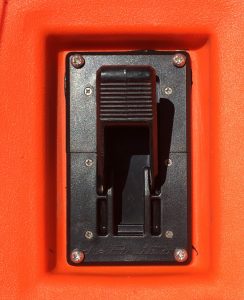Kayaking has given me so much. From friendships cemented with epics in far-flung places, to a way out of inner city London as a youngster to experience a different way and pace of life in the French Alps. It’s provided me with a sport I am good at (I definitely didn’t excel at football at school!) a passion for the great outdoors and a love for being in new and exciting places, as well as a career sharing all this with the next generation of paddlers.
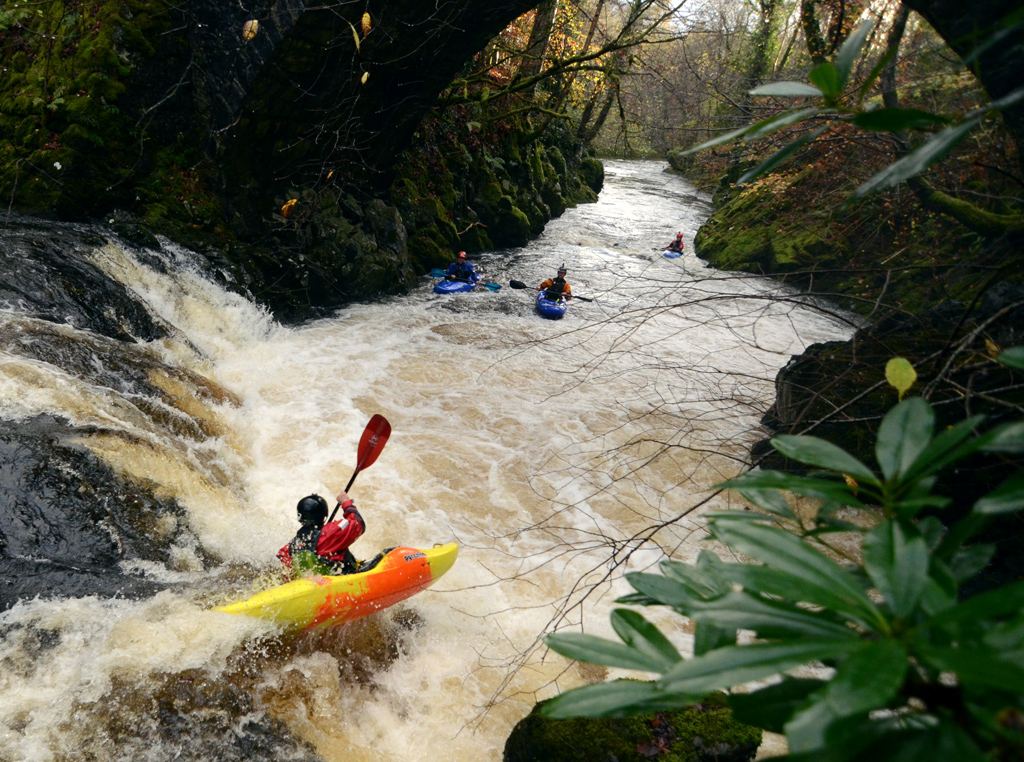
First Ledge on the Wnion, a North Wales classic run. Pic by Tim Burne.
I currently live and work in North Wales, in one of the most accessible National Parks in the United Kingdom. In the area we have some of the most famous whitewater rivers in the UK. Boaters cut their teeth paddling the Llugwy and Glaslyn, develop on the Upper Conwy and Wnion and test themselves on the Ogwen, Mawddach and Fairy Glen. There is a river for everyone to enjoy, and this is one of the things I love about the area.
Like most paddlers I mainly spend my life ignoring politics, and campaigns, but my eyes were opened a couple of years ago when a multinational corporation tried to dam one of the most iconic British Rivers, dig through two kilometres of ancient woodland and build a small scale hydro scheme that breached several environmental guidelines and would have caused unknown damage to an exceptionally fragile ecosystem. This was stopped by people power alone, and being involved in this opened my eyes to how we can all make a difference.
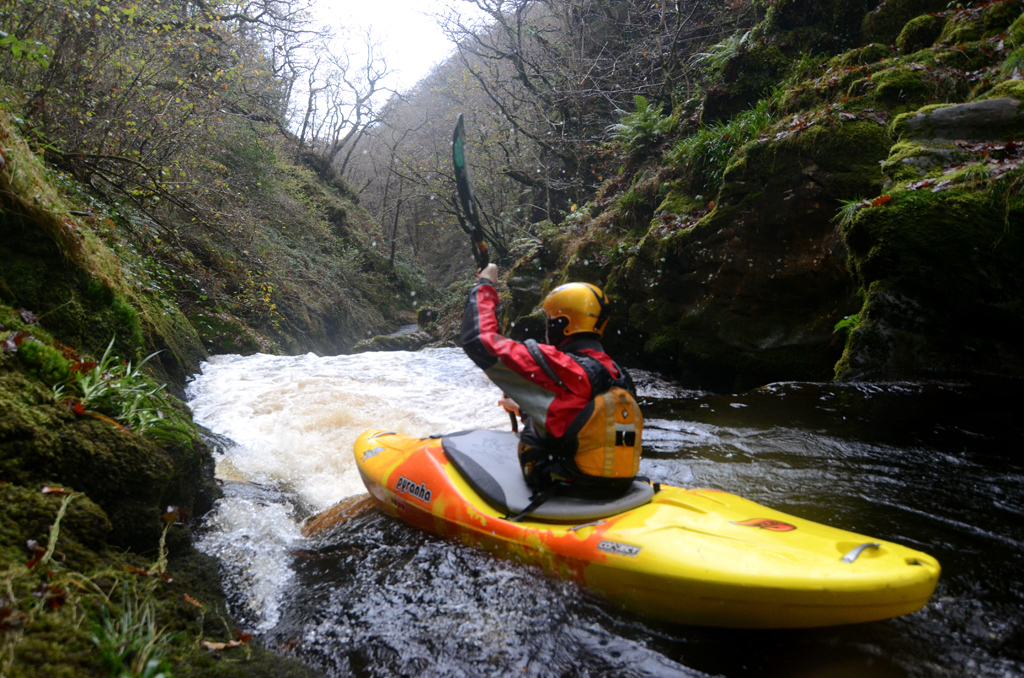
The Afon Cynfal. A rite of Passage!? Pic by Tim Burne
It is these experiences that have caused me to stop and write a passionate plea to all of you. I believe in our collective power, and want to help to protect these places that have given me so much so I can share them with generations to come.
The Welsh Government are about to debate adopting a new report detailing how all the National Parks in Wales are to be managed in the future. The Future Landscapes Wales (FLW) report was leaked in draft form in March, the week before assembly members were due to debate adopting it (Note – prior to having even seen the report, Assembly Members were due to adopt the report – that should set alarm bells ringing…), and a huge public outcry was raised by saveourrivers and other conservation bodies, including the British Mountaineering Council and the Snowdonia Society. Cue backtracking by the Welsh Government, postponement of the debate and assurances that the report was only in draft form.
There was such an outcry over the initial draft as it failed to mention the Sandford Principle, a key conservation safeguard, enshrined in law as one of the defining characteristics of a National Park. The final version, despite assurances to the contrary, also fails to mention this key principle. Perhaps unsurprisingly, given the already murky history of the FLW, the Welsh Assembly has timetabled the debate to adopt the report on the 6th of June, two days before the General Election, whilst attention is elsewhere.
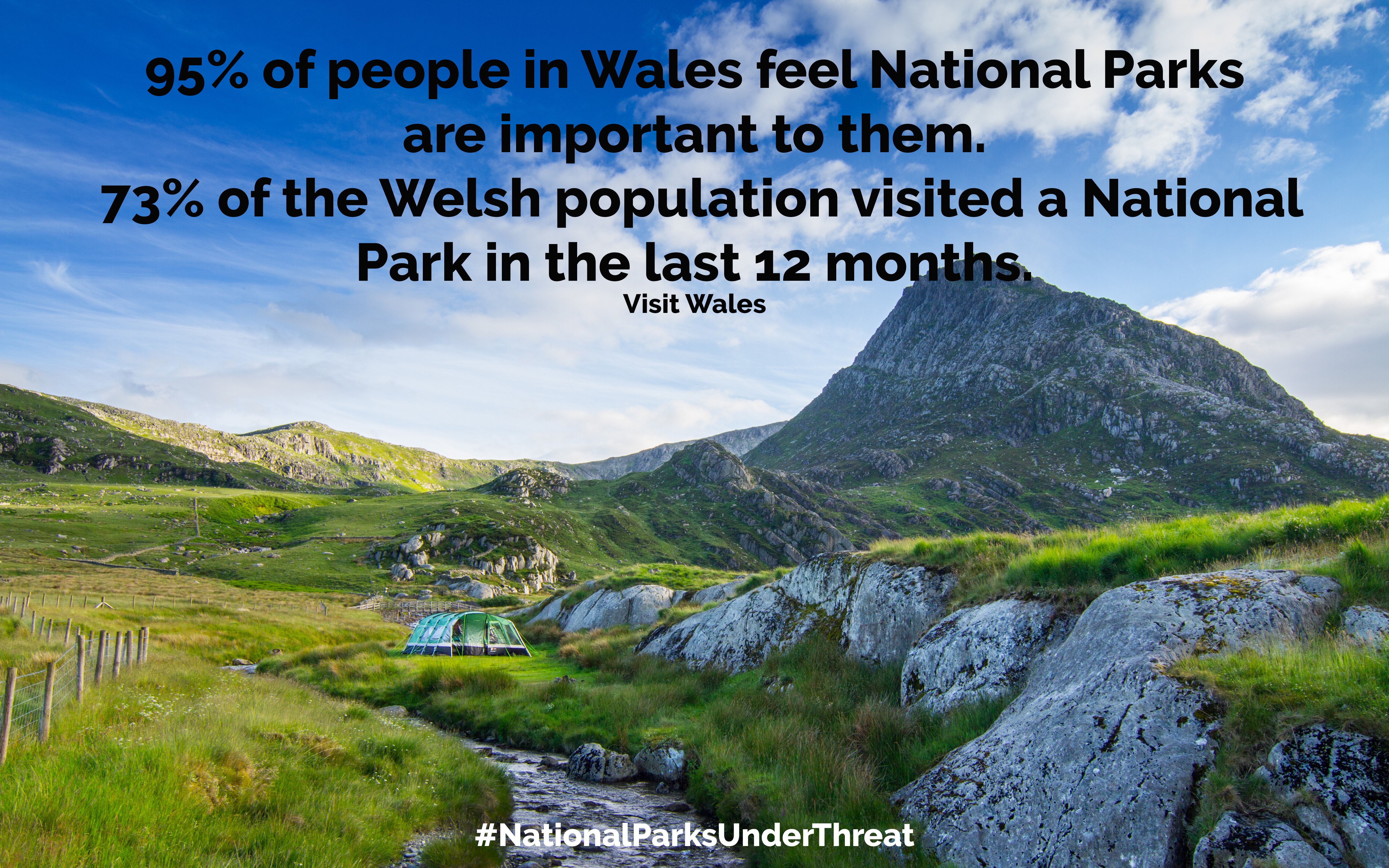
Pic from Save Our Rivers / Patagonia
If the Future Landscapes Wales proposals go forward unchallenged, we will be heading not only for the destruction of the purpose of National Parks, as we have known them for over 60 years, but also leave the Welsh Parks without any legal protection from unadvised development. Without a clear restatement of the Sandford Principle, and without a clear commitment to the conservation of landscape, natural beauty, and wildlife, the National Parks in Wales will be relegated to a lower tier of Protected Landscapes as defined internationally by the IUCN (International Union for Conservation of Nature). Welsh National Parks could become “hub” areas for the development of intensive tourism, renewable energy, and economic development, at the cost of protected landscapes and the promotion of quiet enjoyment that the national parks were established for.
Multiple hydro schemes in all of our rivers anyone? Canalisation of rivers, as in the Alps? Even more limited access to the rivers, as commercial interests close out responsible independent adventure tourists? We can’t let this happen. Our National Parks surely mean more than a badge, a marketing brand, and a commercial asset to be exploited by faceless multinationals.
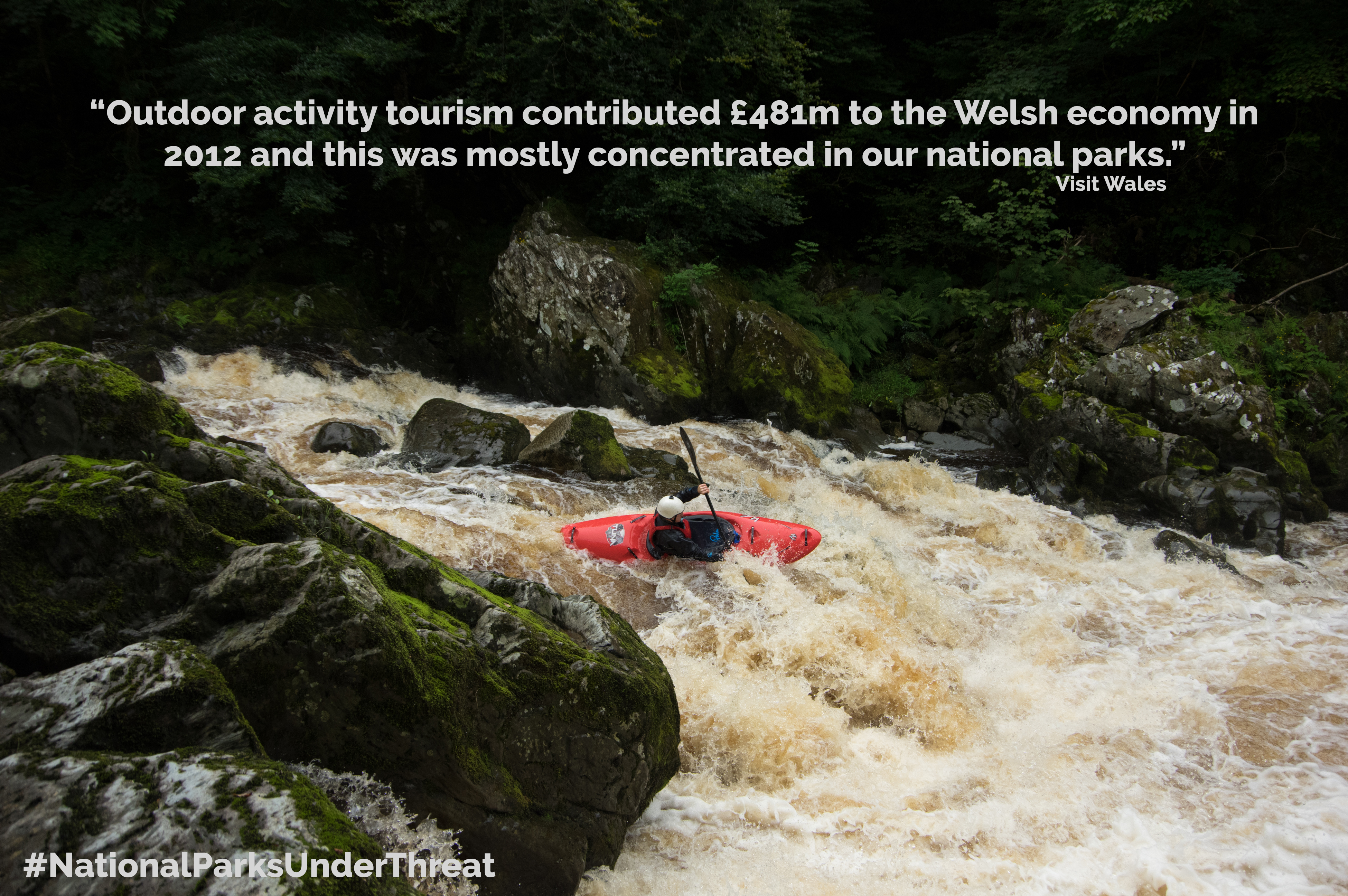
Pic from Save Our Rivers / Patagonia
YOU CAN DO SOMETHING TO HELP!
Action is needed before 6 June!
Actions if you live in Wales:
Write to your five Assembly Members (that’s your constituency Member and all four of your regional Members) and ask them to help.
Click on this map to get the email addresses of your Assembly Members.
Tell them:
- Why you love the National Parks of Wales – Snowdonia, Brecon Beacons and Pembrokeshire Coast and how you benefit from their existence
- That you hope they will be seen to stand up for National Parks in the debate on 6 June, which will be broadcast live on senedd.tv
Ask them to:
- Stand up for proper protection, management, and resources for National Parks and AONBs in the debate on 6 June
- Make landscape, natural beauty, wildlife, quiet enjoyment and cultural heritage central to the debate
- Insist on a Sandford-type conservation principle so that, when there is an unavoidable conflict of purposes, conservation has the higher priority
- Insist on full public consultation for any proposed changes to the purposes of National Parks
- Point out that key conservation and recreation organisations, including the BMC, the Wildlife Trusts, Alliance for National Parks (Cymru) and many others are unable to support the FLW report because it excludes the Sandford Principle.
Make your email short and positive. Assembly Members are genuinely extremely busy people and short emails are more likely to be taken notice of.
Actions if you live outside Wales:
Write to Lesley Griffiths, Cabinet Secretary for Environment and Rural Affairs at Correspondence.Lesley.Griffiths@gov.wales and copy your message to the other party spokespeople for environment – Simon Thomas (Plaid Cymru) Simon.Thomas@assembly.wales and David Melding (Conservative) David.Melding@assembly.wales.
Tell her: How much and why National Parks in Wales matter to you.
Ask her: To show that she understands the importance of protecting, conserving and managing our last big areas of unspoilt countryside. Ask her to move beyond the narrow and old-fashioned view that getting more benefits from National Parks means ‘freeing them up’ to more development and more concrete.
Thank you so much for doing your bit to protect our National Parks.
You can read more about the campaign to save our rivers here.




 The Pacific North West has earned itself a reputation as one of the best destinations for kayaking in the world. Home to a diverse selection of rivers, slides and waterfalls, the area is a geographical paradise for all level of kayakers but especially those looking to pursue the art of free fall. The waterfalls in this area are among some of the tallest (run-able) waterfalls in the world and several world records have been broken here. There is no limit to how big you can go with waterfalls in the PNW but it is also home to one of the most legendary sections of river in our sport, the Little White Salmon.
The Pacific North West has earned itself a reputation as one of the best destinations for kayaking in the world. Home to a diverse selection of rivers, slides and waterfalls, the area is a geographical paradise for all level of kayakers but especially those looking to pursue the art of free fall. The waterfalls in this area are among some of the tallest (run-able) waterfalls in the world and several world records have been broken here. There is no limit to how big you can go with waterfalls in the PNW but it is also home to one of the most legendary sections of river in our sport, the Little White Salmon.




 Ok I guess you’ve waited long enough. You’ve probably seen the pictures and video already. I don’t think I’ve ever gotten this much media coverage on the internet for anything I’ve ever done, but sure enough I take a swim and suddenly I’m famous. So, for those wondering here’s how it went down. Dave drove into town Friday evening having never paddled Brush creek before but planning to race the next day. It was already too late to go up that night so we got started early the next morning. I had already done six or eight practice laps the previous couple days so I went up to show Dave what I thought were the fastest lines for the race course. We’re coming into a rapid called triple drop, which oddly enough is a series of three ledges. There aren’t many eddies so I look over my shoulder on the way in and say “justrun the all down the right.” Upon looking back downstream I note I’m a little late getting right. No problem. I can use that small eddy to help me get there. I made a slight miscalculation and suddenly found myself spun out in the eddy and drifting out the back of it. I took a quick look at the approaching ledge and decided there wasn’t enough time to spin back around. “I definitely don’t want to drop in sideways,” I thought to myself, “I’ll have to run it backwards.” I took my best attempt at a switch boof stroke, but alas it wasn’t good enough. Perhaps that majestic California Boof Stork was lurking somewhere near by. I fell into the hole and was immediately locked into a side surf struggling to keep upright. Dave and Ethan both landed on me and I didn’t budge. I tried going forward and backward but was unable to move an inch in either direction. I tried flipping over but to no avail. With noting working at all I new I had only one option left. Swim. Reluctantly and all too aware that my padawan learner was just down stream I pulled the yellow tab of surrender and was quickly removed from my kayak. I was lucky in that I came right up to the surface and was able to swim into a micro eddy and a small hold on the icy granite before swimming the following ledges. It would have been four years in June, but I guess we all must swim sometimes. At least I got a free beer out of it.
Ok I guess you’ve waited long enough. You’ve probably seen the pictures and video already. I don’t think I’ve ever gotten this much media coverage on the internet for anything I’ve ever done, but sure enough I take a swim and suddenly I’m famous. So, for those wondering here’s how it went down. Dave drove into town Friday evening having never paddled Brush creek before but planning to race the next day. It was already too late to go up that night so we got started early the next morning. I had already done six or eight practice laps the previous couple days so I went up to show Dave what I thought were the fastest lines for the race course. We’re coming into a rapid called triple drop, which oddly enough is a series of three ledges. There aren’t many eddies so I look over my shoulder on the way in and say “justrun the all down the right.” Upon looking back downstream I note I’m a little late getting right. No problem. I can use that small eddy to help me get there. I made a slight miscalculation and suddenly found myself spun out in the eddy and drifting out the back of it. I took a quick look at the approaching ledge and decided there wasn’t enough time to spin back around. “I definitely don’t want to drop in sideways,” I thought to myself, “I’ll have to run it backwards.” I took my best attempt at a switch boof stroke, but alas it wasn’t good enough. Perhaps that majestic California Boof Stork was lurking somewhere near by. I fell into the hole and was immediately locked into a side surf struggling to keep upright. Dave and Ethan both landed on me and I didn’t budge. I tried going forward and backward but was unable to move an inch in either direction. I tried flipping over but to no avail. With noting working at all I new I had only one option left. Swim. Reluctantly and all too aware that my padawan learner was just down stream I pulled the yellow tab of surrender and was quickly removed from my kayak. I was lucky in that I came right up to the surface and was able to swim into a micro eddy and a small hold on the icy granite before swimming the following ledges. It would have been four years in June, but I guess we all must swim sometimes. At least I got a free beer out of it.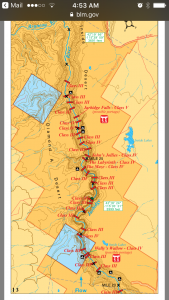
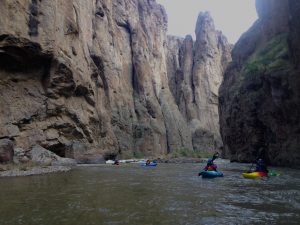

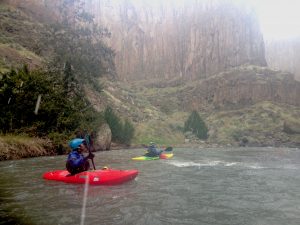
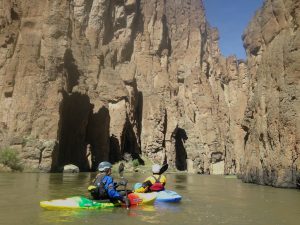
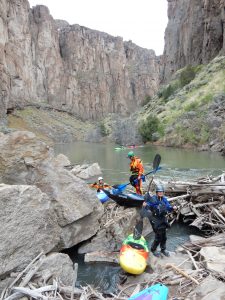

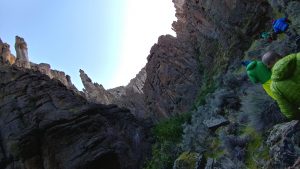

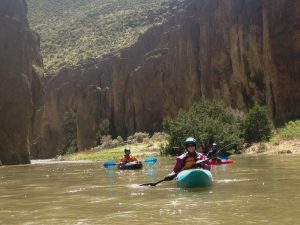

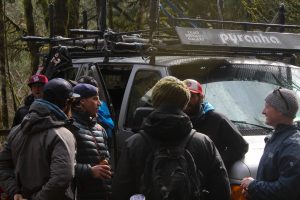

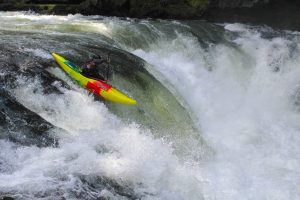
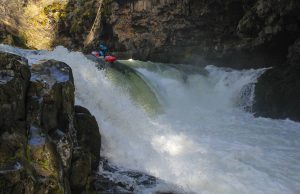
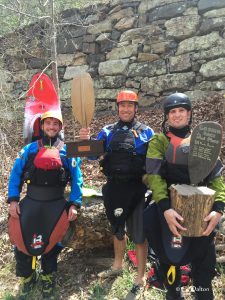
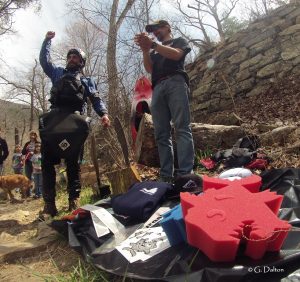
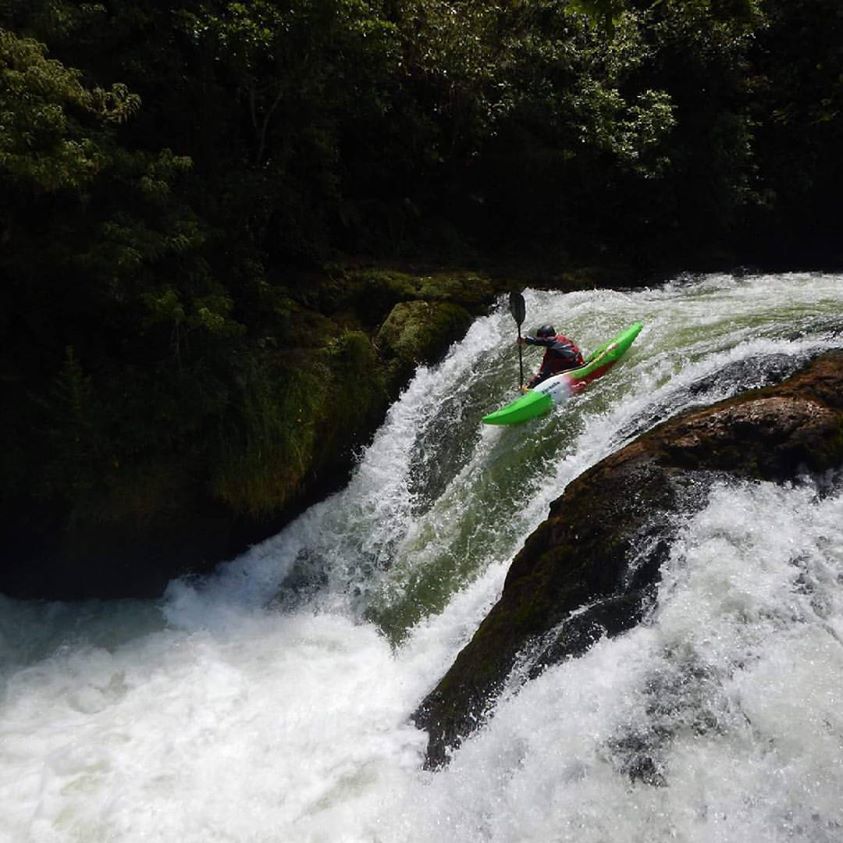
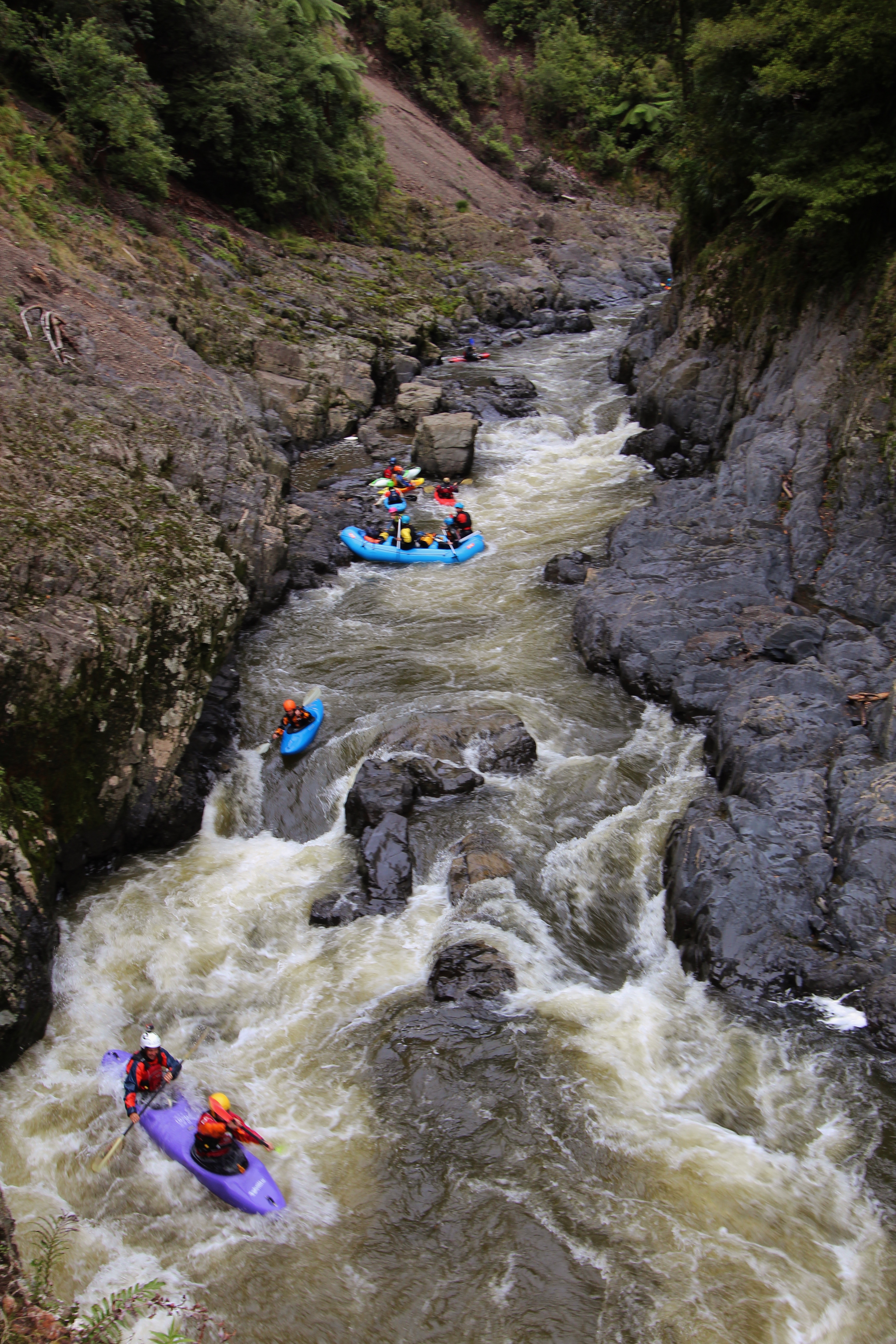
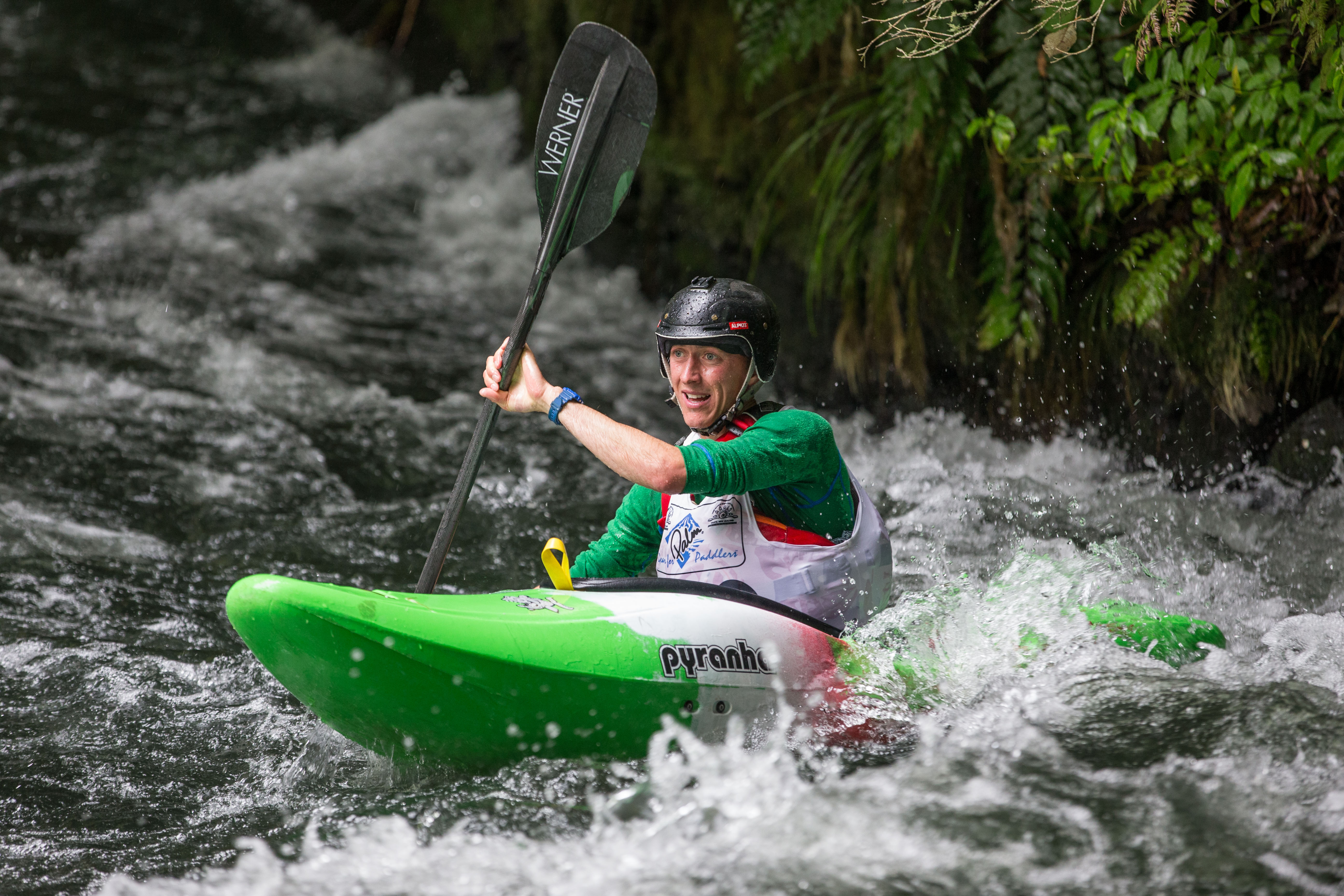
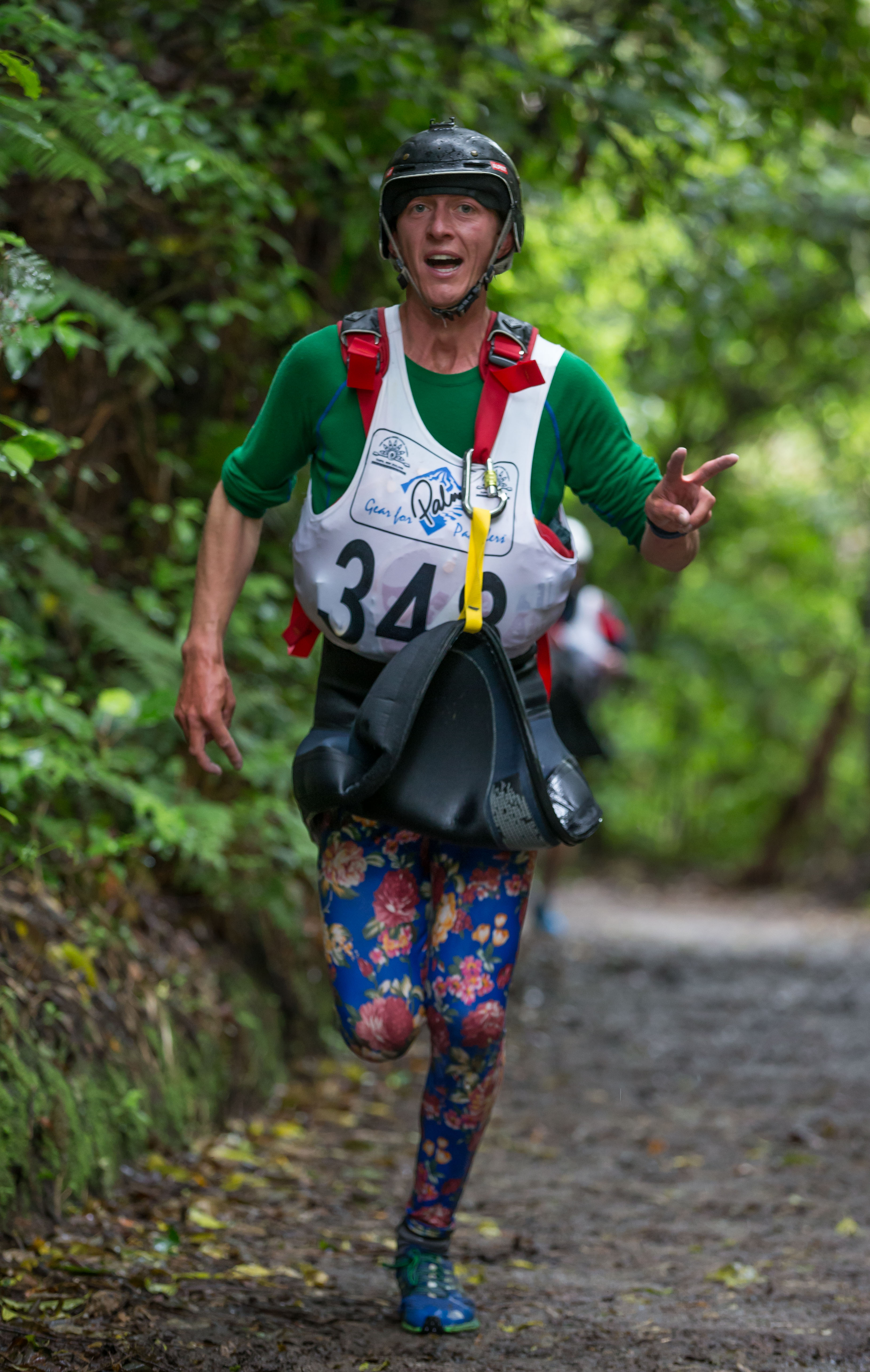
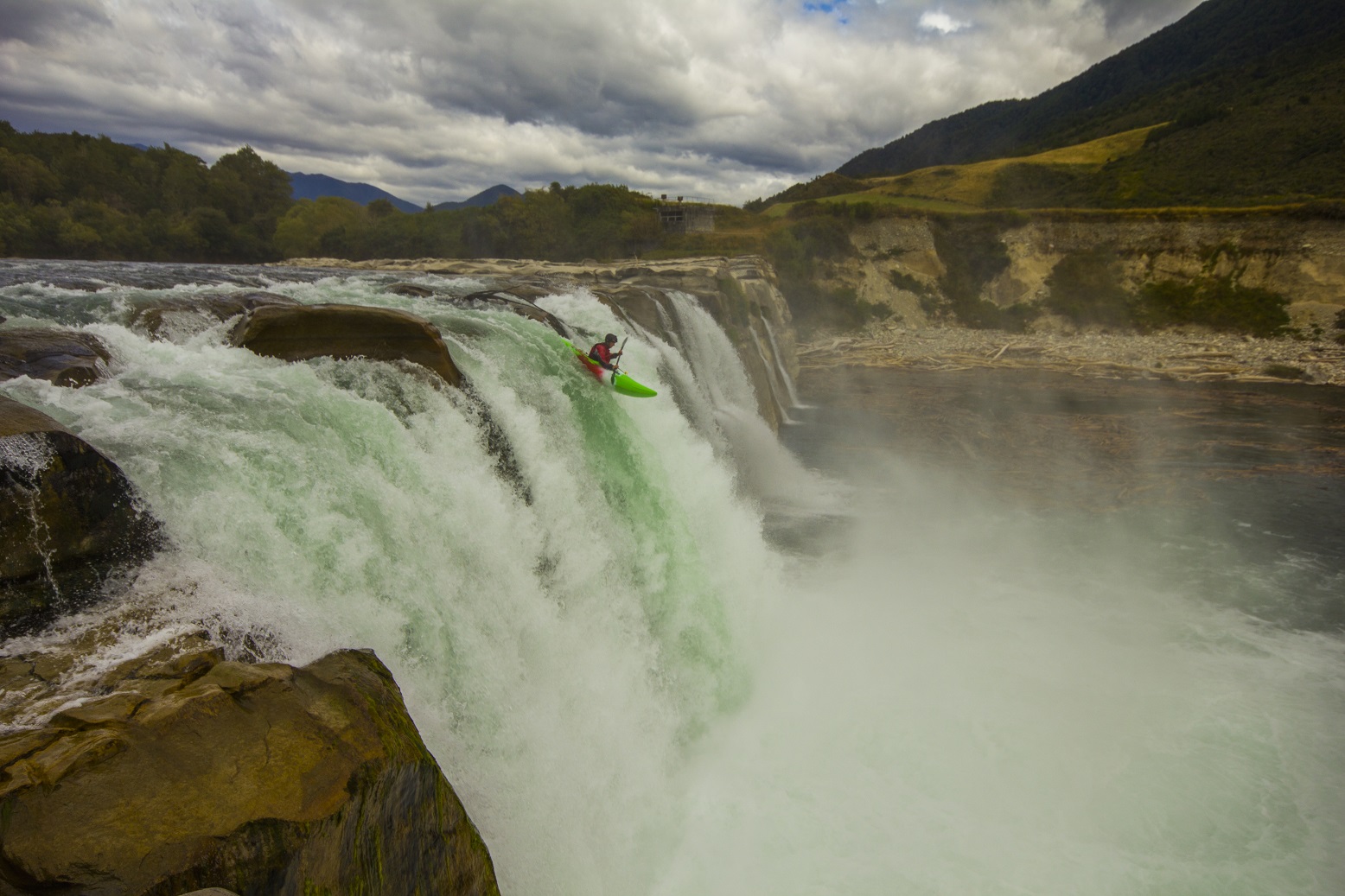



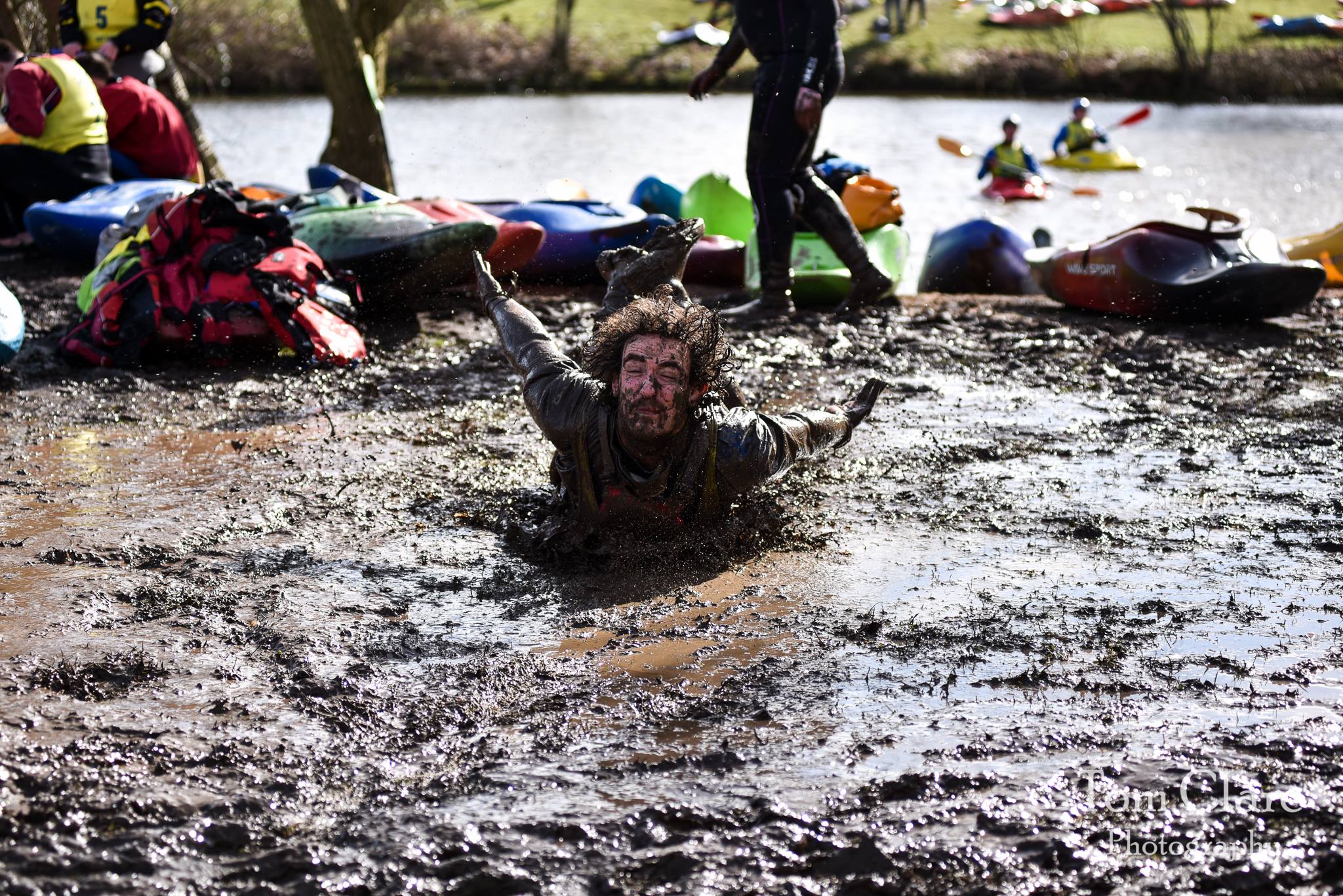




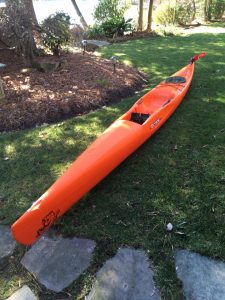
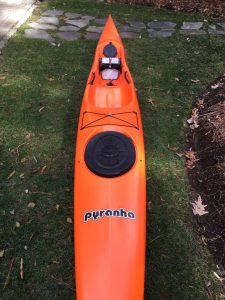 I had been trying out other surfskis for several months prior but I had not found one that fit me best. My main focus was stability, especially since I was using it for solo workouts on the lake or the bay. The primary stability of the Octane is hard to beat, until you feel the secondary stability kick in. Performance is always a key feature- with over 17′ of waterline, the Octane will generate plenty of speed while the rocker allows you to make sharp turns on flatwater and quick turns between waves. My third focus was durability, it is incredible to have a boat under 30 lbs, but after trying to carry a 20′ long boat without hitting an end, having it launch off your shoulder with a sudden wind burst or simply dealing with shallow water and rocks, the composite idea faded away. Plus, while others were repairing their skis on the weekend, I was still out there paddling. Overall, all of the features of the Pyranha Octane make it an impressive surfski.
I had been trying out other surfskis for several months prior but I had not found one that fit me best. My main focus was stability, especially since I was using it for solo workouts on the lake or the bay. The primary stability of the Octane is hard to beat, until you feel the secondary stability kick in. Performance is always a key feature- with over 17′ of waterline, the Octane will generate plenty of speed while the rocker allows you to make sharp turns on flatwater and quick turns between waves. My third focus was durability, it is incredible to have a boat under 30 lbs, but after trying to carry a 20′ long boat without hitting an end, having it launch off your shoulder with a sudden wind burst or simply dealing with shallow water and rocks, the composite idea faded away. Plus, while others were repairing their skis on the weekend, I was still out there paddling. Overall, all of the features of the Pyranha Octane make it an impressive surfski.